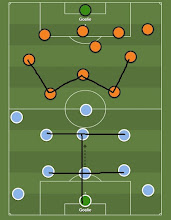Very few managers have a long break from the management before returning to
the dugout at the top level.
Football manager is one of the most challenging jobs in the world,
especially at the top level. One has to deal with perennial pressure from
almost all directions: the team’s top management, sporting or technical
director, the fans, and the star players in the squad too. All expect positive
results and silverware, unless one is at the helm of the mid- or low-level
teams. Once one fails and keeps on doing so, his future as a manager is likely
coming to an end. Otherwise, he would have to take up the job abroad in less
well-known leagues in Asia, Africa, or even Australia.
Another option would be being unattached and waiting until the right
opportunity arises. Unfortunately, such is not that easy. In fact, it could end
up being a long break from the management with the risk of being overlooked, or
worse, forgotten in the football transfer market.
Nevertheless, there have always been anomalies. The most recent one is the
unlikely success story of Eric Roy. He is the current Stade Brestois, which
finished third last season and is making their debut in the Champions League
next week. Roy was a former OGC Nice manager without even an impressive record
in the dugout during his stint there. He was at the helm of the club from March
2010 to November 2011, but only managed to lead them to finish 15th and 17th
place, respectively, before leaving his post to focus on the Sporting Director
position in the same club.
Then in 2023, Brest suddenly appointed him to take charge of the club. Many
would criticise such a decision, but the club's sporting director, Gregory Lorenzi, laid his trust in him to build the team to success. Apparently, Roy
did not take long to reach the target as he guided his team to surprisingly
finish third in his first full season. Previously, Brest only sat 14th in
2022/23.
Eric Roy’s 12-year gap is not the only unusual tale in football management.
There have been two other examples, but with less convincing results, as the
former Sunderland man in the dugout. Here are those two managers who made their
return to top-level management after waiting for more than 10 years.
Kenny Dalglish (11 years)
The former Liverpool star and manager was undoubtedly one of the best in The
Kop’s history. He was even taking a player-manager role from 1985 to 1990
before ending his spell in Anfield after a trophyless season in 1991. Dalglish
had won three league titles and two FA Cups in his first stint. The Scotsman
then took up the job in Blackburn and led them to clinch the EPL title in 1995
before landing in Newcastle.
Unfortunately, his spell in St. James’ Park was forgettable despite helping
them reach the FA Cup final in 1998 and snatching a famous 3-2 win over
Barcelona in the Champions League opener. Dalglish failed in the domestic
campaign as the Magpies sat on the mid-low table, leading to his dismissal.
The former striker was then named interim manager at Celtic to replace John
Barnes in 2000 and delivered the Scottish FA Cup. That was his last time in the
dugout before The Reds came calling in January 2011 to be Roy Hodgson’s
successor. He first brought them to finish sixth in the 2010/11 campaign. In the
following season, Dalglish’s team had slightly better results by progressing to
the League Cup and FA Cup finals. Luis Suarez and Co eventually won the former,
which was Liverpool’s first silverware in six years. Yet, they finished even
worse, on the 8th, leading to his sacking in summer 2012. That was
his last time being on the sidelines.
Diego Maradona (13 years)
The Argentine legend even had a surprising comeback in the dugout despite
his relatively brief and unsuccessful stint in Deportivo Mandiyu and Racing
Club back in 1994 and 1995, respectively. However, in 2008, following the
resignation of Alfio Basile, his boss in the 1994 FIFA World Cup, Maradona
confidently proposed himself to take charge of Lionel Messi and Co. He was
surprisingly named the head coach of Albiceleste ahead of Carlos Bianchi, Diego
Simeone, Miguel Angel Russo, and his former teammate in Mexico 1986, Sergio
Batista.
El Diego’s spell was not entirely convincing. His team had mixed results.
Argentina was even on the verge of failing to qualify for South Africa 2010.
Their campaign in the final round also ended with a disastrous, humiliating 4-0
loss against Germany in the quarterfinal. Perhaps his only notable contribution was teaching Messi to take free kicks, something that La Pulga did not master
prior to 2010. Since then, the World Cup winner has transformed into the most
prolific one. Messi is even currently one of the best free kick takers in
history with 65 goals to date, one goal higher than his archrival, CR7, and equal
to David Beckham’s.
After his spell with Albiceleste, El Pibe de Oro constantly moved to various clubs
without much success from the Middle East, with UAE’s Al Wasl and Fujairah, MX
League side Dorados de Sinaola, and Gimnasia La Plata, where he departed as the
club’s manager in November 2020.



Comments
Post a Comment